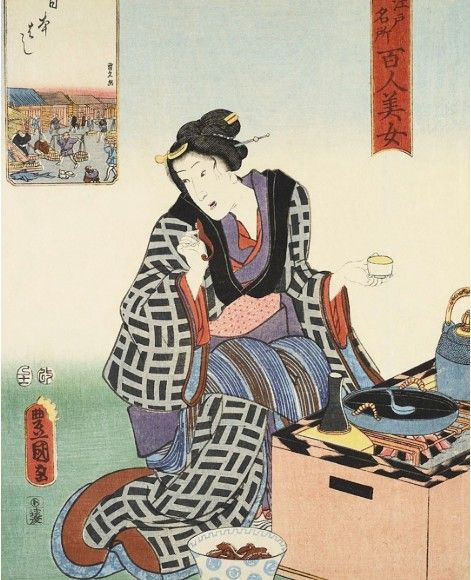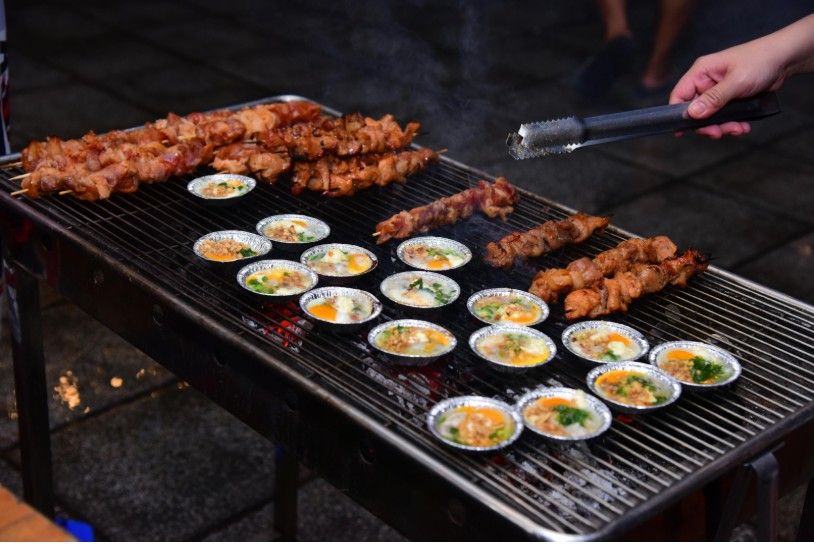So… What Is Hibachi Food Doing in My RV Kitchen?
I never thought hibachi and RV life would cross paths. But picture this: I’m parked under a canopy of pines in northern Arizona, a cool breeze rustling through the trees, and I’m flipping steak bites and zucchini on my tiny griddle while my camp neighbor leans over and asks, “Wait—are you making hibachi food out here?”
Guilty.
The smoky sizzle, the soy-butter aroma, the quick-fried rice? Let’s just say it became my go-to when I wanted something fancy without breaking out the Instant Pot or waiting on campsite BBQs.
So what is hibachi food, exactly? It’s a Japanese-inspired style of cooking that’s bold, theatrical, and surprisingly RV-kitchen-friendly. If you’re into cozy meals, sizzling vibes, and dinners that impress fellow travelers without needing a reservation, you’re going to love this.
What Is Hibachi Food—and Why Are We Obsessed?

Here’s the short answer: hibachi food, at least the way we know it in the States, is food grilled on a flat-top surface—usually in front of you—with plenty of drama, garlic butter, and Yum Yum sauce.
The long answer? Hibachi in Japan originally refers to a small charcoal brazier used for heating rooms—not dinner.
What Americans call “hibachi” is actually teppanyaki, a style of cooking where chefs grill steak, shrimp, chicken, and veggies on a massive flat iron griddle.
But the term hibachi stuck here. And now it means a whole experience: seared meat, stir-fried rice, zingy sauces, and maybe even a flaming onion volcano if you’re lucky. It’s theatrical, savory, and deeply satisfying.
And yes, you can totally recreate it at your RV park with the right gear and mindset.
Can You Make Hibachi-Style Food in an RV?

Absolutely—and it’s a flavor-packed upgrade from camp chili or peanut butter sandwiches.
If you’ve got a portable electric griddle, stovetop skillet, or even a Blackstone (for the fancy folks), you’ve already got the foundation. The hibachi magic comes from high heat, simple ingredients, and quick cooking. It’s practically made for tiny kitchens.
Here’s why hibachi food works so well for RVers:
- It uses minimal equipment.
- Ingredients are easy to prep and store.
- Cooking is fast, which means less propane, less heat inside, and more time outside.
- It smells amazing and makes your neighbors a little jealous (oops).
It’s also interactive—my kind of dinner party.
What Ingredients Do You Need for RV-Friendly Hibachi?

The beauty of hibachi is how adaptable it is. You don’t need a full Japanese pantry to pull this off—just a few staples and fresh produce.
Here’s what I keep on hand for my RV hibachi nights:
- Protein: Thin steak slices, chicken breast, shrimp, or tofu
- Veggies: Zucchini, onions, mushrooms, broccoli
- Carbs: Pre-cooked rice or yakisoba noodles (I store them in a cooler drawer)
- Seasonings: Soy sauce, garlic, sesame oil, ginger (fresh or powdered), butter
- Sauces: Teriyaki glaze and Yum Yum sauce (store-bought or homemade)
You heat that skillet, toss it all together, and boom—you’ve got dinner in under 30 minutes with zero fuss.
What Makes Hibachi Food So Dang Delicious?

It’s the trifecta of heat, timing, and seasoning. Hibachi-style cooking happens hot and fast, which means:
- The veggies stay crisp-tender.
- The meat gets that perfect seared crust.
- The garlic butter and soy sauce caramelize slightly on the grill, giving every bite that “oof, yes” flavor.
And then there’s the sauce factor. Traditional hibachi food often features savory elements like soy or ginger sauce, but in American-style hibachi restaurants, it’s all about the Yum Yum sauce—a creamy, tangy, slightly sweet dip made with mayo, ketchup, and spices.
How Do You Make Hibachi Food at Your Campsite?

Let me walk you through my no-fail hibachi method that’s RV-tested and Noah-approved.
Step 1: Prep Before You Power Up
Slice your proteins and veggies into bite-sized pieces before cooking. If you’re doing this inside the RV, less raw meat contact = easier cleanup.
Step 2: Fire Up That Heat
Get your skillet or flat griddle super hot. Don’t be shy—hibachi’s all about high heat.
Step 3: Cook in Stages
Start with the meat (add butter + garlic), sear it quickly, and remove. Then toss in veggies. Once they’re tender, toss everything back together with sauces.
Step 4: Serve with Fried Rice or Noodles
If you’ve got leftover rice, stir-fry it in garlic butter and soy sauce with an egg scrambled right in. Or heat up some pre-cooked noodles for a chewy, satisfying side.
Step 5: Add Sauce & Flair
Drizzle Yum Yum or teriyaki, sprinkle sesame seeds, and do a little flourish if you’re cooking for friends. Trust me, they’ll remember it.
Got Questions? I’ve Got Answers.
1. What is hibachi food’s difference from teppanyaki?
Technically, hibachi refers to a charcoal heater in Japan. What we think of as “hibachi food” in the U.S.—meat, veggies, and fried rice grilled in front of you—is actually teppanyaki. But at this point, “hibachi” is the name Americans use, even if it’s not quite right.
2. Can I make hibachi food without a grill?
Absolutely. I make it on a cast iron skillet or nonstick pan all the time. As long as you’ve got enough heat and a wide surface, you’re golden.
3. Is hibachi food healthy?
It can be! You’re using lean proteins, fresh veggies, and you control how much butter and sauce goes in. I usually skip the heavy teriyaki and go light on the rice when I’m watching my energy levels.
4. What sauces go best with hibachi food?
Yum Yum is the cult classic, but I love a simple garlic-soy reduction or even a ginger-sesame vinaigrette if I’m feeling light. Keep a squeeze bottle in the fridge—you’ll use it on everything.
Final Scoop Before You Fire Up the Griddle
If you’ve ever wondered what is hibachi food, it’s more than just steak and fried rice—it’s an experience. It’s a little smoky, a little saucy, and way easier to pull off in an RV than I ever imagined. And honestly, asking this is no different from when people ask what is Peruvian food—sometimes the best way to understand is to taste it for yourself.
The first time I made hibachi under the stars, it wasn’t just dinner—it was an event. I cooked, I entertained, I ate too much garlic butter (no regrets). And now? It’s become a staple in my on-the-road recipe box.
So go ahead—turn that campsite picnic table into your own personal hibachi station. You don’t need a fancy setup, just a skillet, a little fire, and a craving for flavor.
Catch you at the next sizzle.














